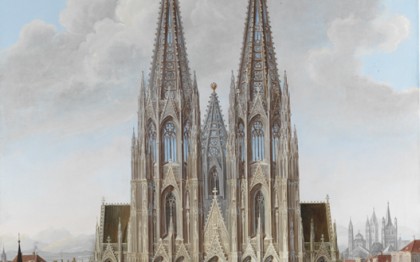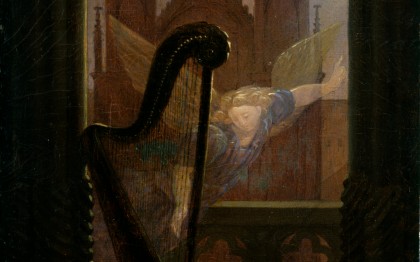The rehabilitation of the Middle Ages took place earlier in Germany than in France. In 1770, the young Goethe, in Strasbourg to study law, was overwhelmed by the beauty of the cathedral. This artistic bolt from the blue gave rise to a short essay: On German Architecture (1772) - one of the earliest apologias for the Gothic style and a vibrant homage to the legendary Erwin von Steinbach, the Baden-born architect of the monument, in whom the writer perceived a specifically Germanic form of genius.
Although historically baseless, the idea that the Gothic style had its roots in the German popular imagination was widely accepted at the beginning of the 19th century. It served as a source of inspiration for the greatest artists: Caspar David Friedrich, Gustav Carus and the painter and architect Karl Friedrich Schinkel frequently returned to the motif of the mediaeval cathedral, often represented in imaginary form and deeply imbued with allegorical significance.
“If Cologne Cathedral were finished, Gothic architecture would boast a gigantic monument which we could compare to the greatest achievements of ancient and modern Rome,” said the writer Friedriech von Schlegel in 1806. Grandiose plans had existed since the 14th century for this church, whose construction has been interrupted for centuries. Following a survey among the population, plans to relaunch the building work finally took shape in 1841. The revived project was launched with great pomp and ceremony by the Prussian King Frederick William IV. His brother, by then the Emperor, celebrated the culmination of this Herculean task in 1880. Thanks to this major building project, which took place in tandem with the unification process of the country, Cologne cathedral became one of the key emblems of the young German nation.



